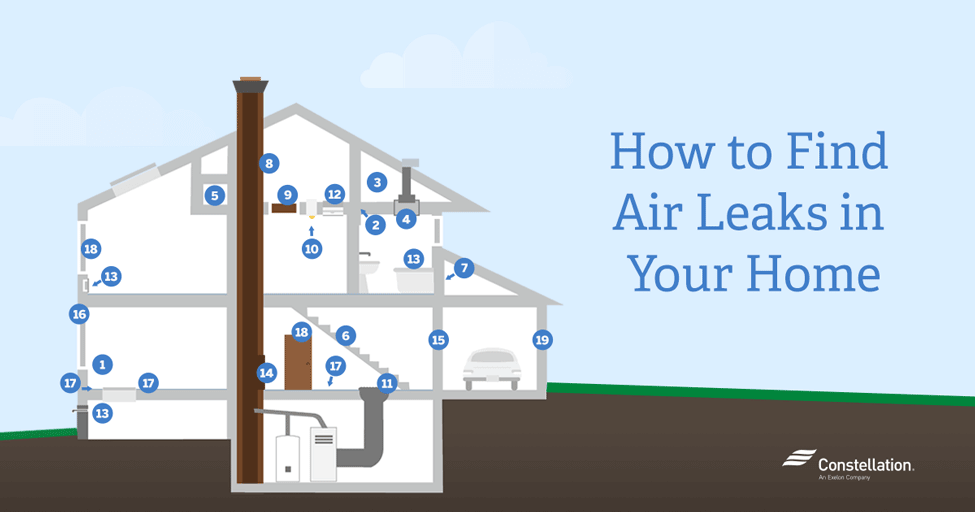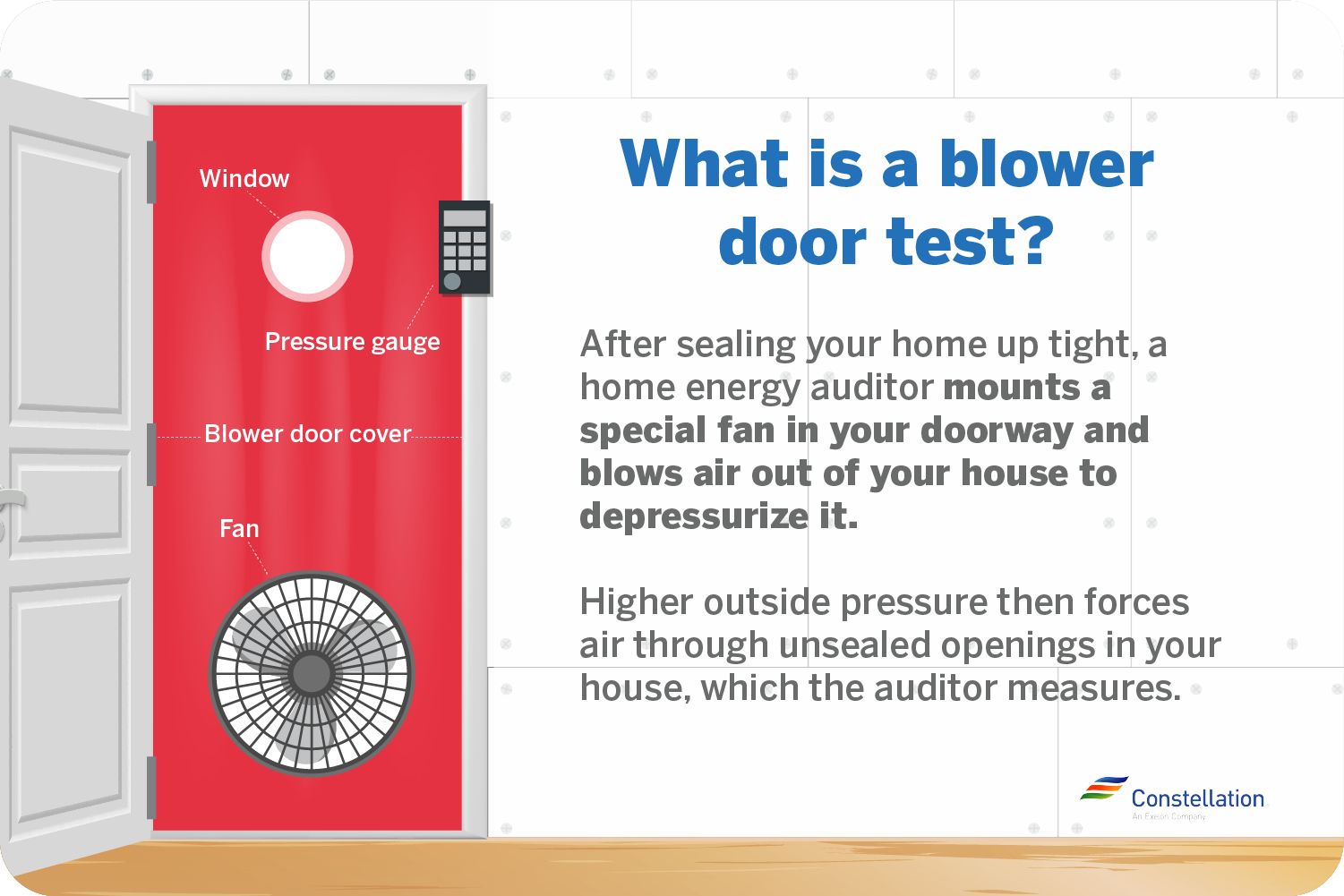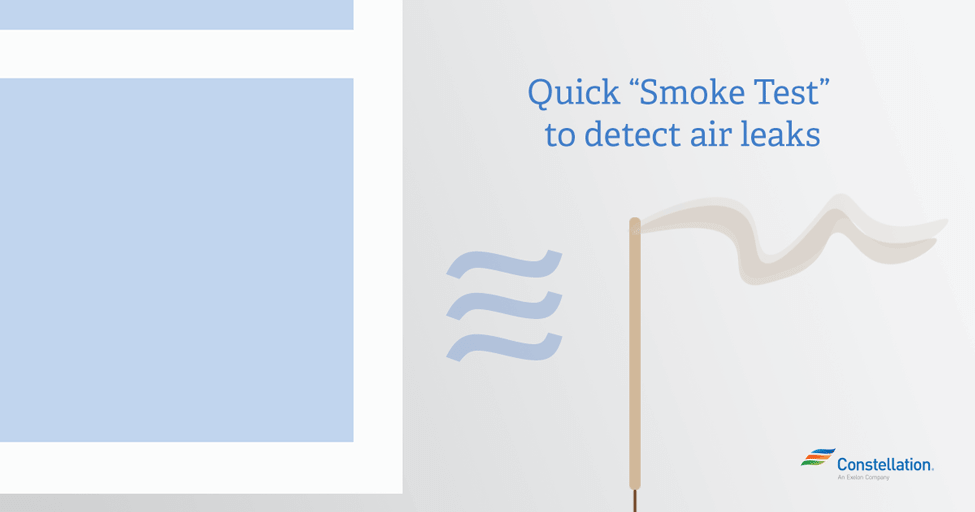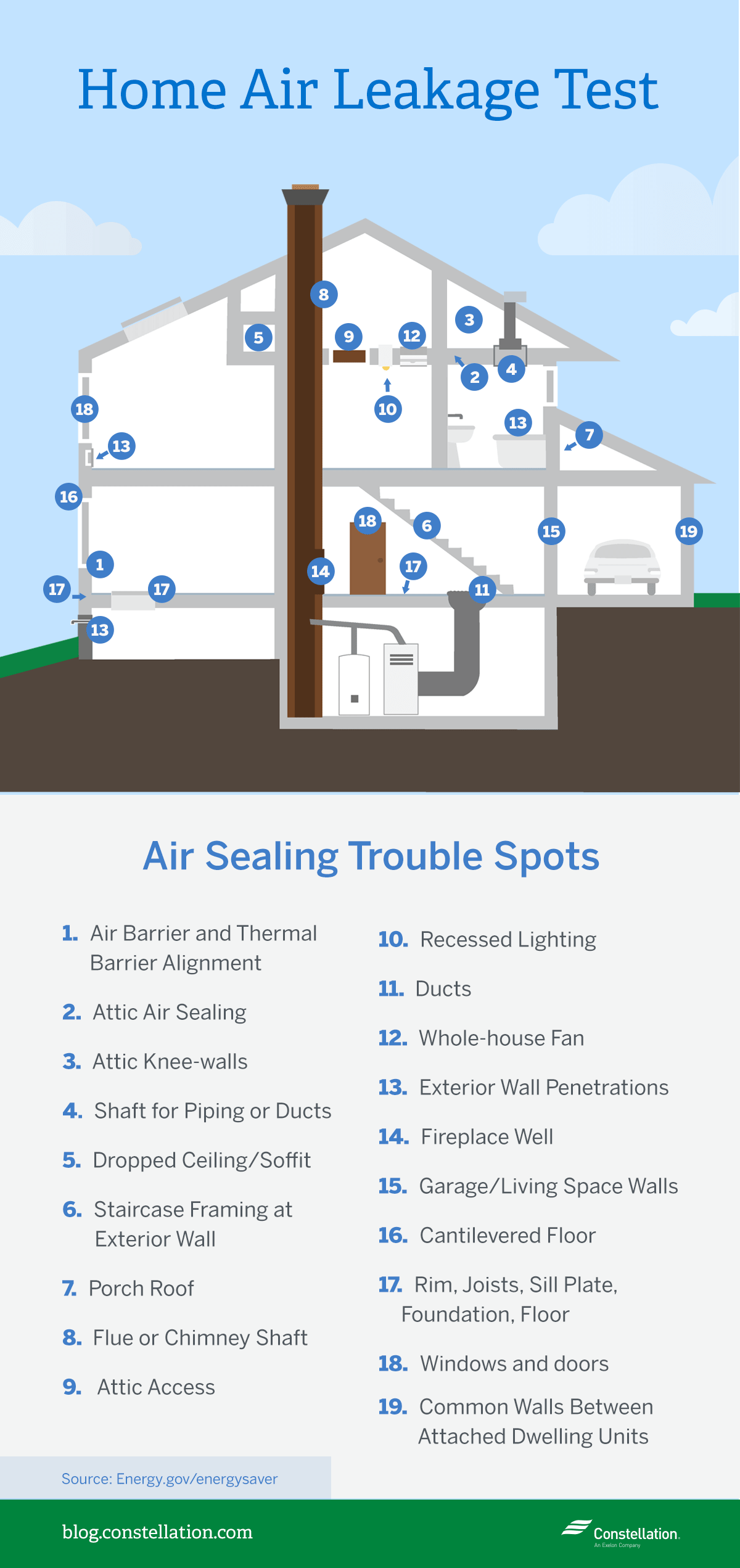
- Category:
Energy Efficiency -
Last updated:
September 8, 2021
How to Find Air Leaks in Your Home
Finding and sealing air leaks in your house is a great way to take charge of your energy bill. If you’re questioning whether it’s worth the effort, consider this: The average house has enough home air leaks to add up to a 2-square-foot hole. That’s like leaving a medium-sized window wide open 24 hours a day. When the weather is extremely hot or cold, those home air leaks could quickly add up to some serious energy waste.
A smart place to start your home air leakage testing is with an energy audit. While you can do a basic check yourself, the energy efficiency test that an auditor would perform can likely find home air leaks that the average homeowner would miss. A professional home energy audit, for instance, will include a blower door test.
What is a blower door test?
When hiring a professional to do a home energy audit, one of the efficiency tests they can conduct is a blower door test. This test involves sealing your home up tight and then blowing a special fan that depressurizes your home. The blower door testing takes place both before and after your home is sealed so that the auditor can compare home air leaks and provide potential solutions.

Energy.gov notes you could save 5%-30% on your energy bill by sealing air leaks suggested in an energy audit. While blower door testing is a great option if you’re looking into a home energy audit with a professional, there are a number of ways to find drafts in your house with things you already own.
DIY ways to find air leaks in your home
If you want to do your own home energy efficiency testing, there are several simple methods that can be effective. And it’s helpful to do even if you’re hiring a professional, because the auditor will want to know what you’ve observed yourself. Here are some helpful steps for you to follow if you want to find home air leaks on your own:
- Check all areas where different building materials meet on the outside of your home. If you have siding alongside the chimney, or exterior brick connected to a cement foundation, exterior corners, outdoor faucets or other places that are touching but not solid, air might be escaping or entering through a gap or crack.
- Check for cracks and gaps inside your home. Top spots to check include electrical outlets, switch plates, door and window frames, electrical and gas service entrances, baseboards, fireplace dampers, attic hatches, cable TV and phone lines, where dryer vents pass through walls, vents and fans, wall- or window-mounted air conditioners, and recessed lighting. Be on the lookout for cracks and gaps where air could leak out.
- Use the flashlight method for energy efficiency testing. This is similar to the blower door test, but instead, you use light to find drafts in your house. If you suspect gaps, ask someone to shine a flashlight through the potential gaps from indoors when it’s dark outside. Stand outside and watch for light seeping through. This should reveal where your cracks are and help you detect air leaks, especially if they’re large gaps.
- Shut a door or window on a dollar bill. This is a simple and effective way to check for air leaks around windows and doors. If you can easily pull the dollar bill out, you’ve likely got a window air leak that needs to be addressed.
- Hold a piece of paper in areas where you suspect a leak. The paper will move if, for instance, you’ve found a cold air draft around an electrical outlet or window frame.
- Check insulation. Wall insulation plays an important role in preventing home air leaks. For example, proper insulation ensures that the warm air in your home in the winter stays contained in the areas you need it. Insulation’s ability to resist heat flow is measured by something called thermal resistance, or R-value. Energy.gov offers suggestions for determining adequate R-values and creating an energy-efficient attic or basement. Learn more in our video about R-value.
The most common spots for home air leaks
Air leaks can develop in many easy-to-miss places within the home. The more you’re able to locate and repair, the more energy (and money) you stand to save. Figuring out how to find air leaks in your house starts with knowing where to look. This illustration shows the most common spots for home air leaks.
How to find door and window air leaks
The paper test and dollar bill test are two simple and effective ways of finding air leaks in your house. But they aren’t your only options. A “smoke test,” or building pressurization test, is another popular way to detect air leaks around windows and doors. To perform a smoke test for air leaks in your home, follow these steps:
- Choose a windy day to get the best result.
- Turn off all combustion appliances and exhaust fans.
- Shut all your windows and doors and close any fireplace flues.
- Light incense to create a smoke stream.
- Hold the incense up to potential window and door air leaks or drafts, and wait to see if the smoke changes direction.
- Pay attention to a smoke stream that’s interrupted by a draft or air leak sucking the air out of the room, or blowing it inward.
This DIY home air leakage test will help focus your efforts once you start considering your sealing options. For example, it may lead you to consider other energy-saving investments, such as insulated energy-efficient windows for your home.

Options for sealing air leaks in your home
After you’ve performed your home air leakage test and identified the problem areas, the next step is to plug them up. The size and location of the air leak will largely determine how you should approach the repair. Generally, though, you’ll have a few different options for sealing home air leaks:
Caulking the air leaks in your home
Caulking is helpful for sealing air leaks in cracks, gaps or joints less than a quarter inch wide between stationary materials. Caulking comes in a variety of strengths, properties and prices. Some are water-based, while others are solvent-based. This handy Energy.gov caulking list can help you pick the right one for your home air sealing project.
Adding weatherstripping around doors and windows
Weatherstripping is what you should use to stop air from leaking around doors, windows and other moveable pieces. As with caulking, choosing the right weatherstripping for the job will make all the difference in the success of your seal. If air is coming through your window frame, for example, you may need a different kind of weatherstripping than if it were coming from beneath your door.
Preventing home air leaks with insulation
An energy efficiency test can help you find cold air drafts coming from your walls, but most of the time, adding additional insulation to a wall is challenging. That said, if you focus on a specific area within the home, you can influence your overall energy savings with a few improvements. For example, to prevent air leaks in your home, you may decide to invest in a well-insulated energy-efficient door.
It’s wise to go through your home and improve insulation, sealing and overall energy efficiency room by room. For example, you could start by adding attic insulation and basement insulation.
Air leaks are the invisible culprit in higher energy costs. Finding a cold air draft coming through the window frame may not seem like much, but a few small leaks are enough to affect energy usage. Taking some time to find air leaks in your house and make repairs is always important. And it’s just one of the many energy-efficient home upgrades that you can make for greater savings.





